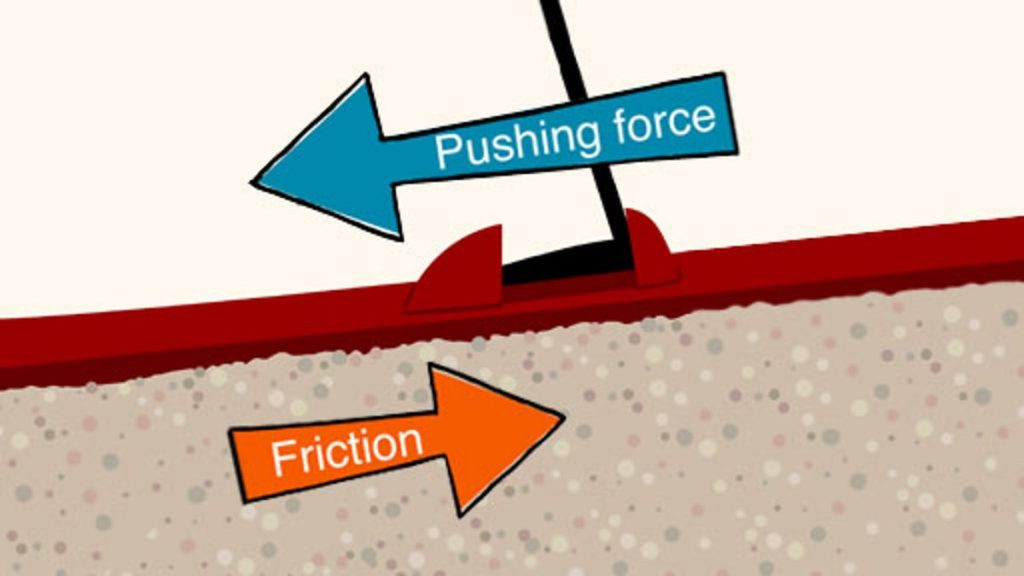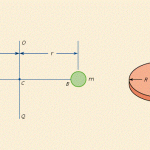When a body moves or tends to move over another body, a force opposing the motion develops at the contact surfaces. The force which opposes the movement or the tendency of movement is called the frictional force or simply friction. So far, in earlier chapters, we had ignored this force and considered contacting surfaces are smooth. Actually in almost all cases the contacting surfaces are not smooth. There are minutely projecting particles which develop frictional force to oppose the tendency to movement of one surface over the other surface. In this chapter, the additional terminology used in connection with frictional forces are explained and laws of dry friction (wet friction excluded) are presented. Applications of these laws to many engineering problems are illustrated.
Coefficient Of Friction
Whenever a resultant force acts in the direction of contacting surfaces frictional force develops to oppose that force. The frictional force, like any other reaction, has a remarkable property of adjusting itself in magnitude to the tangential force. However, there is a limit beyond which the magnitude of the frictional force will not develop. If the applied tangential force is more than this maximum frictional force, there will be movement of one body over the other body with an acceleration as per Newton’s second law of mass times acceleration equal to the resultant force. This maximum value of frictional force, which comes into play when the motion is impending is known as Limiting Friction. It may be noted that when the applied tangential force is less than the limiting friction, the body remains at rest and such friction is called Static Friction, which will have any value between zero and limiting friction. If the value of applied tangential force exceeds the limiting friction, the body starts moving over another body and the frictional resistance experienced while moving is known as Dynamic Friction. The magnitude of dynamic friction is found to be less than limiting friction. Dynamic friction may be further classified into two groups:
(i) Sliding Friction: It is the friction experienced by a body when it slides over the other body.
(ii) Rolling Friction: It is the friction experienced by a body when it rolls over another body.
It has been experimentally proved that, between two contacting surfaces, the magnitude of limiting friction bears a constant ratio to the normal reaction between the two and this ratio is called ‘Coefficient of Friction’. Referring to Fig. 5.1 a body weighing W is being pulled by a force P and the motion is impending. Let N be normal reaction and F the limiting frictional force. Then

Laws Of Friction
The principles discussed in a previous article are mainly due to the experimental studies by Coulomb (1781) and by Mozin (1831). These principles constitute the laws of dry friction and may be called as Coulomb’s laws of dry friction. These laws are listed below:
(i) The frictional force always acts in a direction opposite to that in which the body tends to move.
(ii) Till the limiting value is reached, the magnitude of frictional force is exactly equal to the tangential force which tends to move the body.
(iii) The magnitude of the limiting friction bears a constant ratio to the normal reaction between the two contacting surfaces.
(iv) The force of friction depends upon the roughness/smoothness of the surfaces.
(v) The force of friction is independent of the area of contact between the two surfaces.
(vi) After the body starts moving, the dynamic friction comes into play, the magnitude of which is less than that of limiting friction and it bears a constant ratio to the normal force. This ratio is called coefficient of dynamic friction.



Comments are closed